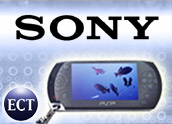
Sony’s latest firmware update for its PlayStation Portable (PSP) gaming device unleashes the full power of the machine’s processor, accelerating its CPU (central processing unit) speed from 266 MHz to 333 MHz.
Although the increased speed does not affect games currently being sold, those under development could afford players an improved gaming experience, but at the cost of shorter battery life.
Pedal to the Metal
Since the PSP’s launch two years ago, Sony has added 15 updates to the device’s firmware. Those updates include a Web browser and GPS (Global Positioning System) functionality. In the latest update, 3.50, users will have remote access to the PS3, and game makers will have the ability to capitalize upon the device’s full CPU speed.
Rumors of the enhancement began circulating on fan sitePSP Updates and later were confirmed by Sony spokesperson Al DeLeon, who told TechNewsworld developers have the option to utilize the full processing speed of the PSP’s CPU.
Most PSP games run at 222 MHz, with more advanced games restricted to a maximum of 266 MHz. While modders, or users who modify such devices, long ago discovered ways to run the CPU at top speed, game developers had to wait for a firmware update that would bring the capability to the majority of PSP users.
Developers can certainly make the games richer, Rob Enderle, principal analyst at Enderle Group, told TechNewsWorld. “A higher clock speed means you can do more things because the processor can now handle more things — so it makes for better games. It gives them some head room they didn’t previously have.”
Game makers will now be able to include more functionality, Enderle explained, such as more elements on the screen for extra activity and a higher level of realism. The processor is key to making the characters and games appear real.
Halting the Slide
For both the PS3 and the PSP, 2007 has been a disappointing year. Somewhere between 20 million and 30 million PSPs have been sold since the device’s release, Enderle estimated. However, the PSP took second place to Nintendo’s DS portable gaming device in March, according to total game industry sales figures released by sales-tracking firm NPD. The DS outsold the PSP nearly 3 to 1 with consumers purchasing some 508,000 units of the Nintendo player and only 180,000 PSPs.
As with the PS3, the release of must-have games is the only thing that will increase the PSP’s sales, Enderle said.
“There are a lot of PSPs in folks’ hands,” he noted, “but what will increase sales of the PSP is more compelling content. It’s not that people weren’t buying the PSP because they thought the processor wasn’t fast enough. If they weren’t buying the PSP, it was because they didn’t see anything they wanted to run on the PSP that they thought was compelling.”
If the increase in processor speed leads to better games, Enderle noted, then that could result in better sales. “In the end, it’s the games that will increase the sales — not the processor speed.”
Increasing the device’s speed for PSP game developers could be part of a redesign, Enderle said. The player is on five-year cycle, he said, and at this point Sony is probably in the midst of a revamp.
“We should have a new PSP in design at this point, but we’re probably about a year out from a release,” he speculated.
“There are a lot of little things they could change, too. Flash memory has come down, they could put more memory in it. You could certainly improve some of the other technologies that exist in it. You can get better graphics now in small form devices. You can probably up the battery life quite a bit — and they could do a touch screen. That’s a nice device for a touch screen,” Enderle concluded.




















































